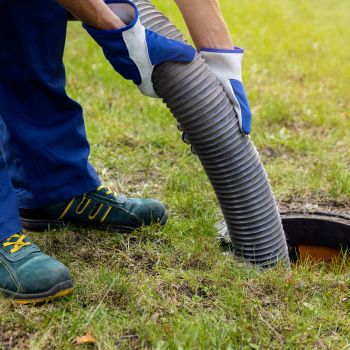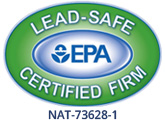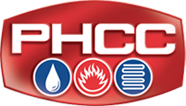How to Care for Your Septic System
 Septic systems are a common home feature, treating all discharged wastewater and helping with irrigation. To perform these actions, a septic system functions as an independent sewage treatment facility and provides a practical alternative in regions not equipped with a sewer system.
Septic systems are a common home feature, treating all discharged wastewater and helping with irrigation. To perform these actions, a septic system functions as an independent sewage treatment facility and provides a practical alternative in regions not equipped with a sewer system.
Each septic system typically consists of a tank, which captures all wastewater and filters out the solid particles. Microorganisms help break down any additional waste. The wastewater travels to a drain or leach field, where it’s released through perforated pipes into the surrounding soil.
Ideally, the septic system is out of sight and out of mind, lasting up to 40 years without generating odors or getting backed up. However, insufficient maintenance and overworking the system can cause permanent damage and require it to be dug up and replaced. Understand how to properly care for your property’s septic system to avoid this extensive, time-consuming and expensive process.
Know Where The System Is and How It Works
The septic tank does not exist in an isolated location. Rather, pipes travel to the system from your home’s wastewater drainage line and it sits in an area known as the leach field.
To ensure the tank works as expected and is not releasing sewage into the ground, know where it’s located on your property and how the pipes travel there. A sewer cover may be in place, the sewer pipe from the basement may provide some guidance or you may need to look up a record of the permit requested to initially install the tank.
Inspect and Maintain the Septic System
To avoid clogs and waste accumulation, have your septic system inspected at least every one to three years by a professional and get all waste pumped out every three to five years. Systems that see more wastewater due to household size or that feature electrical or mechanical components need to be inspected more frequently – ideally every year.
During these appointments, the septic professional assesses the waste layers, checks for leaks, may pump out any waste and examine the baffles for wear. Additionally, your tank’s bacteria may be replenished to improve performance and decrease the amount of waste present.
Between appointments, you’re recommended to check around the tank for:
- Grass that looks greener or lusher than the rest of your lawn – a sign of leaking sewage
- A strong, foul odor – a sign of a clogged leach field
Clogs tend to occur after floods, as snow melts on your property or in response to a backup in your plumbing system. Clogs may be accompanied by wet, muddy earth around the septic tank. Also avoid using antibacterial soaps and detergents, as these can decrease the bacteria population present.
Space Out Usage
Due to how water flows to the septic tank, space out all tasks involving washing and rinsing, including doing dishes and the laundry on separate days. You can also do each chore in smaller increments – for example, washing a single load of clothes in the morning, then doing your dishes at the end of the day. Completing everything at once can overload the septic system and flood the drain field.
Also know how much water flows through to your septic system. The average family uses anywhere from 70 to as much as 200 gallons of water per day, with older, less-efficient or leaking appliances and toilets leading to greater usage. To further conserve water and preserve your septic system:
- Use energy-efficient toilets and ENERGY STAR appliances
- Install aerators or flow restrictors in your showerhead and faucets
- Break up laundry into smaller load sizes
Watch What You Throw Down the Toilet and Sink
Everything you put down a toilet or drain ends up in the septic system. If bacteria cannot break it down, it becomes a clog. If your home uses a septic system, only put human waste, toilet paper and food that will decompose into the toilet, garbage disposal or sink. Avoid the following:
- Cooking oil, grease, cream or other fat-based substance that will harden
- Cheese and wax
- Wet wipes, even if they claim to be flushable
- Feminine hygiene products and diapers
- Paper towels
- Dental floss
- Items made of plastic or acetate, including dental floss and cigarette butts
- Drugs and medications
- Cat litter
- Household chemicals, including cleaning products, motor oil, pesticides, paint, antifreeze, gasoline and drain cleaner
- Coffee grounds
If you have a garbage disposal, install an in-sink unit that you can empty and won’t send particles to the septic tank. While the bacteria can help food decompose, the process is slow, can contribute to a clog and often results in a thicker biofilm. If your garbage disposal empties into the plumbing, the septic tank will need to be inspected more frequently.
Pay Attention to the Drain Field
To limit damage to the drain field:
- Never park your car or leave heavy equipment over this area, as the weight may damage the pipes.
- Never install concrete, asphalt or a similarly heavy material over the drain field, as it will affect water evaporation and how oxygen reaches the soil.
- Keep trees, shrubs and gardens away from the drain field, as the roots can grow into the pipes or absorb sewage from the ground.
- Never construct a deck or patio near a drain field.
- Avoid having a sump pump empty onto or near the drain field, as the water can overwhelm the septic system and cause it to run slowly.
Are you concerned about your septic system or the plumbing traveling to its tank? If you suspect a clog or a leak, contact the plumbers at MJ Fahy & Sons to schedule an appointment.




